- Create a reusable static library
- Create a executable project
- Mix C++ code with object C code
2. Start XCode and create a new project. Select iOS - Library - Cocoa Touch Static Library project template.
3. Right click Other Sources and select add Existing Files.
4. Select the src/google directory, and add the directory recursively.
5. In the previous step, we add too much source files than actually needed. The sources files for the protoc compiler and unittest are included too. They're not needed to run ios application. To filter out unnecessary files, we can refer to the libprotobuf_lite_la_SOURCES and libprotobuf_la_SOURCES variables in src/Makefile, which list source files needed for protobuf library.
6. Now we need to add header file search path. Click Edit Project Settings under Project menu item.
7. Double click Header Search Paths.
8. Add protobuf and protobuf/src directory.
9. Now build the project.
10. In the terminal, run "make install" command to build protoc compiler and install it to default location(/usr/local/bin/protoc).
11. Go to examples directory and run "protoc addressbook.proto --cpp_out=./" to generate addressbook.pb.cc and addressbook.pb.h files.
12. Create a Window-Based Application.
13. Add reference to the static library we built. Right click Frameworks and select Add Existing Frameworks.
14. Click Add Other button.
15. Select the libprotobuf_ios.a file and click add button. Also, we need to add protobuf/src and protobuf/examples directory to Header Search Paths for this project.
16. Rename add_personAppDelegate.m to add_personAppDelegate.mm so that it'll be compiled as object C++.
17. The basic logic of add_personAppDelegate.mm is first create the addressbook.dat file in iphone's document directory. Then create a new AddressBook instance and add a person to it. Finally serialize the addressbook to the file we created. The full source is :
#import "add_personAppDelegate.h"
#include "addressbook.pb.h"
#include <fstream>
using namespace std;
@implementation add_personAppDelegate
@synthesize window;
#pragma mark -
#pragma mark Application lifecycle
- (BOOL)application:(UIApplication *)application didFinishLaunchingWithOptions:(NSDictionary *)launchOptions {
GOOGLE_PROTOBUF_VERIFY_VERSION;
NSArray *paths = NSSearchPathForDirectoriesInDomains(NSDocumentDirectory, NSUserDomainMask, YES);
NSString *documentDirectory = [paths objectAtIndex:0];
NSString *filename = [NSString stringWithFormat:@"%@/addressbook.dat", documentDirectory];
ifstream input([filename UTF8String], ios::in | ios::binary);
tutorial::AddressBook address_book;
address_book.ParseFromIstream(&input);
int count = address_book.person_size();
tutorial::Person *person = address_book.add_person();
person->set_id(42);
person->set_name("raymond");
person->set_email("raymond@gmail.com");
tutorial::Person_PhoneNumber *pn = person->add_phone();
pn->set_type(tutorial::Person_PhoneType_WORK);
pn->set_number("12345678");
fstream output([filename UTF8String], ios::out | ios::trunc | ios::binary);
person->SerializeToOstream(&output);
NSHomeDirectory();
// Override point for customization after application launch.
[self.window makeKeyAndVisible];
return YES;
}
- (void)applicationWillResignActive:(UIApplication *)application {
/*
Sent when the application is about to move from active to inactive state. This can occur for certain types of temporary interruptions (such as an incoming phone call or SMS message) or when the user quits the application and it begins the transition to the background state.
Use this method to pause ongoing tasks, disable timers, and throttle down OpenGL ES frame rates. Games should use this method to pause the game.
*/
}
- (void)applicationDidEnterBackground:(UIApplication *)application {
/*
Use this method to release shared resources, save user data, invalidate timers, and store enough application state information to restore your application to its current state in case it is terminated later.
If your application supports background execution, called instead of applicationWillTerminate: when the user quits.
*/
}
- (void)applicationWillEnterForeground:(UIApplication *)application {
/*
Called as part of transition from the background to the inactive state: here you can undo many of the changes made on entering the background.
*/
}
- (void)applicationDidBecomeActive:(UIApplication *)application {
/*
Restart any tasks that were paused (or not yet started) while the application was inactive. If the application was previously in the background, optionally refresh the user interface.
*/
}
- (void)applicationWillTerminate:(UIApplication *)application {
/*
Called when the application is about to terminate.
See also applicationDidEnterBackground:.
*/
}
#pragma mark -
#pragma mark Memory management
- (void)applicationDidReceiveMemoryWarning:(UIApplication *)application {
/*
Free up as much memory as possible by purging cached data objects that can be recreated (or reloaded from disk) later.
*/
}
- (void)dealloc {
[window release];
[super dealloc];
}
@end
18. After build and run the application in iphone emulator, we get generated addressbook.dat file in /Users/user_name/Library/
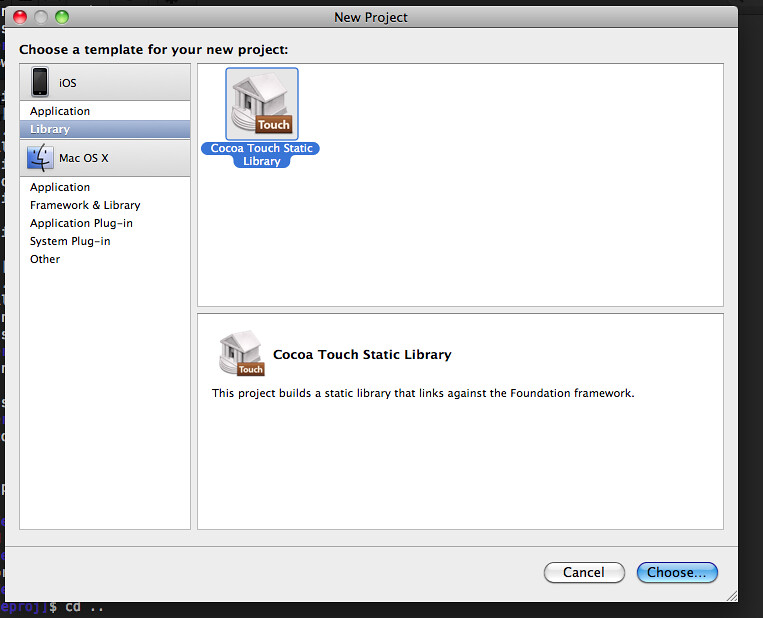
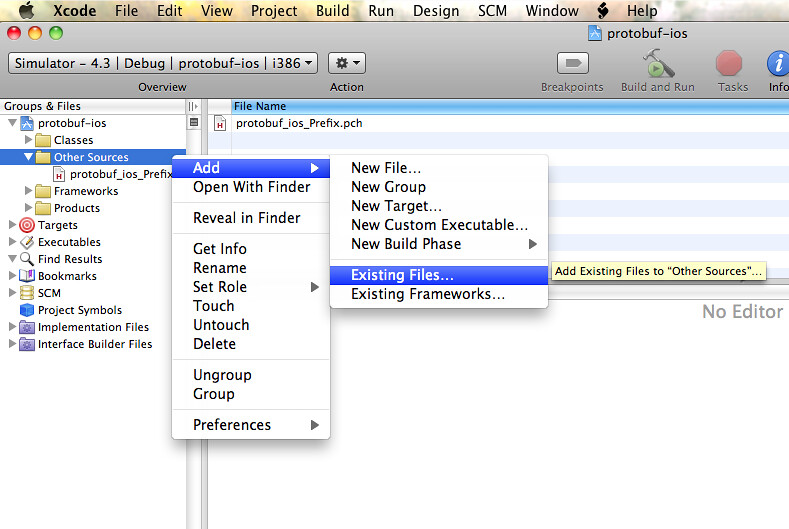

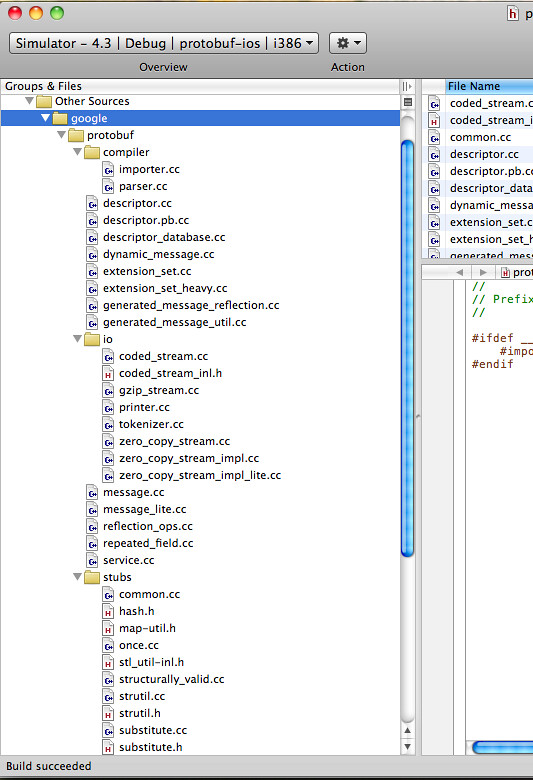
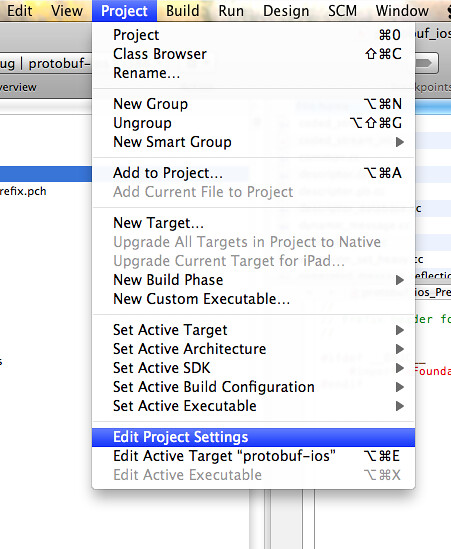
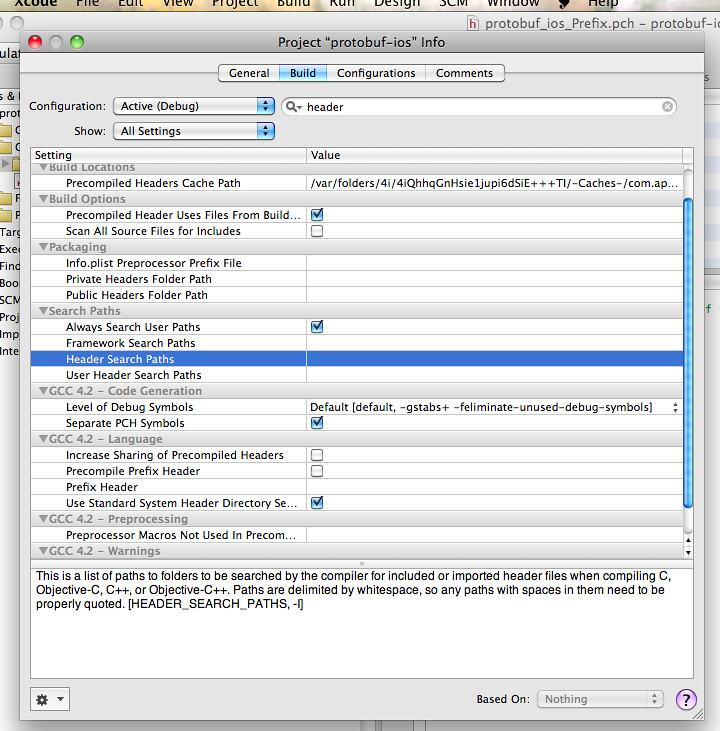
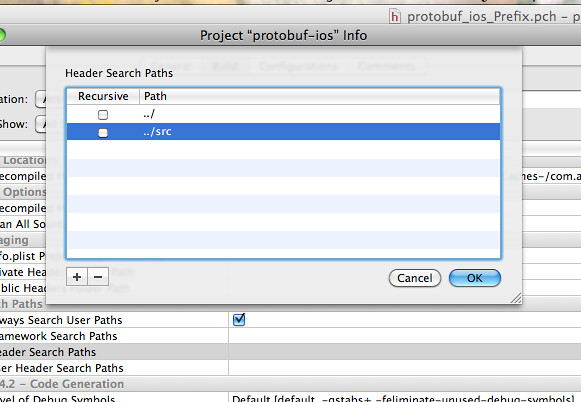
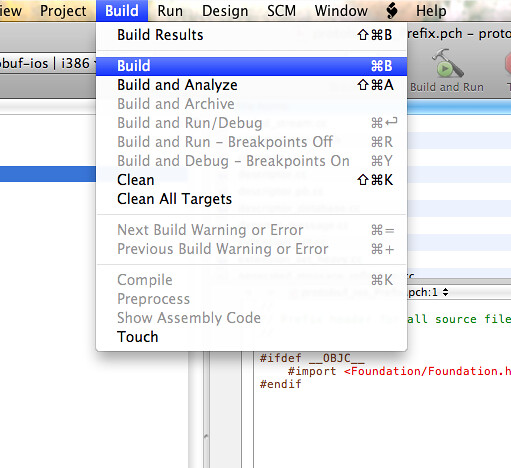
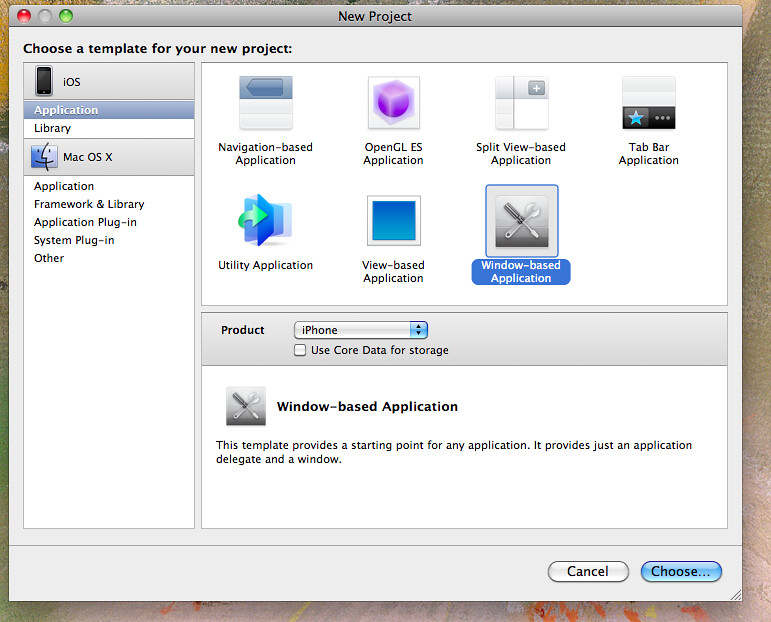

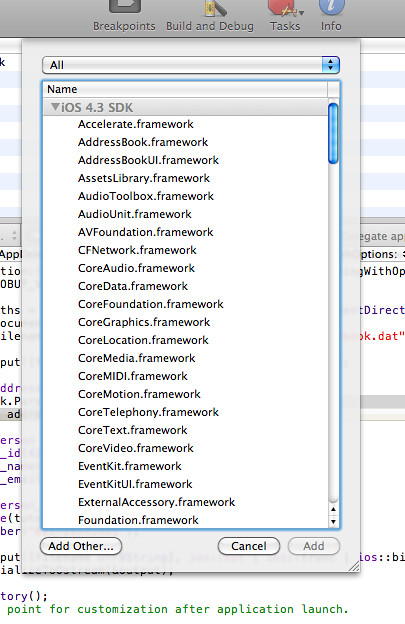

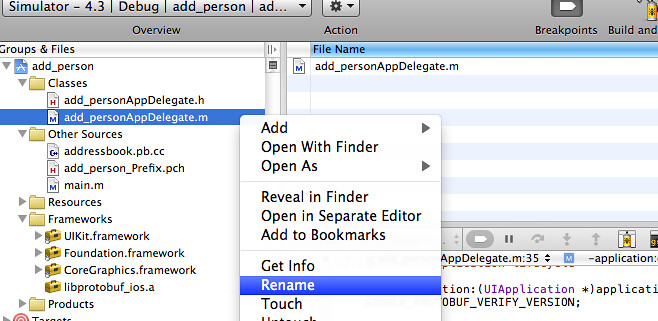
No comments:
Post a Comment